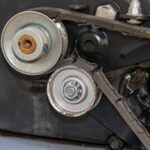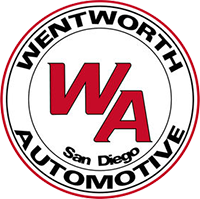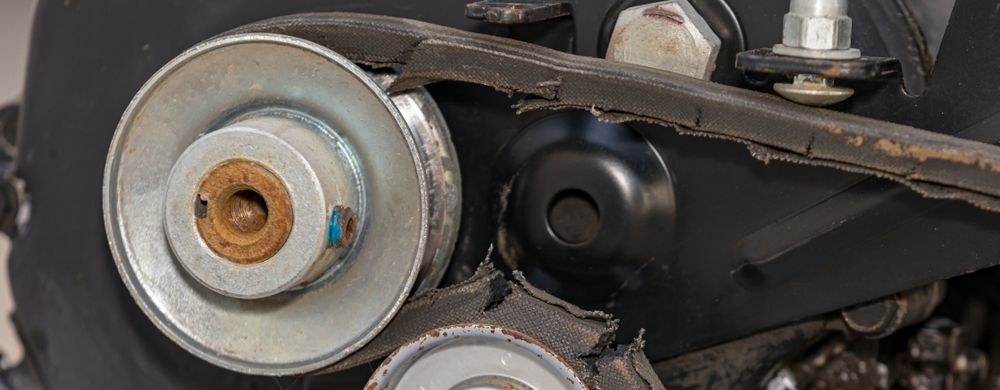 For those of us who are old-as-dirt, sometimes it’s hard to give up using phrases that are no longer accurate. Do you still schedule a ‘tune-up’ for your car when it’s time for an oil change? How about looking for a new ‘fan belt’ at your local auto parts shop? Well, my friends, it’s time to learn some new (or maybe I should say, ‘more accurate’) automotive terminology. Engine drive belts transfer the power generated by your combustion engine to other car parts via the serpentine belt, timing belt, and accessory V-belt. It sounds like magic, but it’s really only engineering. It’s still neat, though.
For those of us who are old-as-dirt, sometimes it’s hard to give up using phrases that are no longer accurate. Do you still schedule a ‘tune-up’ for your car when it’s time for an oil change? How about looking for a new ‘fan belt’ at your local auto parts shop? Well, my friends, it’s time to learn some new (or maybe I should say, ‘more accurate’) automotive terminology. Engine drive belts transfer the power generated by your combustion engine to other car parts via the serpentine belt, timing belt, and accessory V-belt. It sounds like magic, but it’s really only engineering. It’s still neat, though.
What’s The Purpose Of Engine Drive Belts?
The various engine drive belts under your car’s hood are instrumental to its operational success. They are unique in design and function. As vehicles continue to advance in technology, efficiency, and luxuries, the components that make it all happen evolve, too. Since auto manufacturers design cars a bit differently from each other, the engine drive belts used in any given vehicle may differ. I have gathered some basic information on the most common engine drive belts found in today’s vehicles. Read your owner’s manual for specific details on your vehicle’s drive belts.
Accessory V-Belt
Accessory V-belts are the OG (original) style drive belts that mount on the outside of the engine and run all the vehicle’s accessory components. They get their name due to their shape, which tapers from a wider top to a narrower bottom. You can adjust the tension on individual accessory V-belts by changing the position of an idler pulley wheel or loosening and tightening the slotted mounting brackets holding the various components operated by the belt. As vehicles obtained more accessories, manufacturers just added more V-belts to power them. Older model cars with all the ‘bells-and-whistles’ often have several V-belts powering multiple parts, like:
- A/C compressor
- Alternator
- Cooling fans
- Emissions air pump
- Power steering pump
- Water pump
Serpentine Belt
Most newer cars no longer use multiple V-belts and instead utilize a single, longer drive belt, known as a serpentine belt. The serpentine belt connects and powers many of your car’s components. They are long, flat belts with grooves that wind around multiple pulleys and power accessories, such as:
- Alternator
- A/C compressor
- Crankshaft
- Idler pulleys (reroutes the belt to the next accessory)
- Power steering pump
- Tensioner (maintains correct tension)
- Water pump
Timing Belt
Timing belts incorporate durable materials, like welded urethane, neoprene, or molded polyurethane. They are flat with strong, molded teeth attached to the inner surface (like a ladder) that align with the crankshaft and camshaft drive gears. A timing belt operates your engine’s valves and pistons in perfect sync, allowing the crankshaft to turn the camshaft without damage. Timing belts are hidden from view because they operate inside the engine. Unlike other types of drive belts that run multiple accessories, timing belts usually only power:
- The crankshaft and camshaft drive gears
However, in certain internal combustion vehicles, the timing belt may also help operate the engine’s:
- Oil pump
- Water pump
Timing Chain
Auto manufacturers have equipped cars with timing chains since the 1960s, but they tend to go in and out of popularity. Typically, timing chains consist of steel and last longer than their molded timing belt counterparts. Vehicles have either a timing belt OR a timing chain.
Do Engine Drive Belts Need Maintenance?
While engine drive belts don’t have a specific maintenance routine, they do benefit from overall vehicle maintenance. First, keeping your vehicle free of oil leaks can help your drive belts last longer. Second, check your coolant levels frequently to prevent your engine from overheating. Finally, an engine compartment free of excess dirt and moisture can help prolong the lifespan of all the engine components. A dirty engine with leaking oil and low coolant levels can hasten corrosion to the belt’s materials. When your drive belts become dry, they weaken, stretch, and wear out faster.
Replacement Intervals
As we all know, automotive components come with a manufacturer-suggested lifespan. At some point, every component requires service, repair, or replacement. Drive belts are no different. Factory-recommended belt replacement intervals vary by vehicle. Read your owner’s manual for details on your specific car.
- Accessory V-Belt: Typically lasts between 40,000 and 70,000 miles.
- Serpentine Belt: Requires replacement every 90,000 to 100,000 miles.
- Timing Belt: Generally require replacement at 60,000 to 100,000 miles.
Warning Signs Of Failing Drive Belts
Engine drive belts require replacement when they show cracks, appear worn out, or exhibit other signs of damage. Sudden system failures may be due to loose or broken drive belts. Depending on your vehicle’s age, make, and model, you may have one or more types of drive belts. Below are some general warning signs of failing belts.
Accessory V-Belt
- Air conditioning isn’t cool
- Alternator issues
- Dashboard warning lights
- Engine overheats
- Multiple components fail simultaneously
- Power steering problems
- Squealing sound from the engine
- Visible belt damage
Serpentine Belt
- Air conditioning isn’t cool
- Alternator issues
- Engine overheats
- Multiple components fail simultaneously
- Power steering problems
- Squealing sound from the engine
- Visible belt damage
Timing Belt
- Check engine light
- Engine damage
- Oil leaks
- Overheating engine
Engine Drive Belts Service & Replacement
At Wentworth Automotive, our goal is to offer the best auto services available at affordable prices to get you back on the road in no time. Our ASE-certified and Master mechanics only use high-quality replacement parts for all maintenance services and repairs. If you suspect faulty engine drive belts, bring your car in for an inspection. We can replace old, worn, or broken drive belts and determine if any other components require service.
Schedule Engine Drive Belts Service in Kearny Mesa, CA
To schedule an appointment, please contact us at (858) 541-1044 or visit our website.

